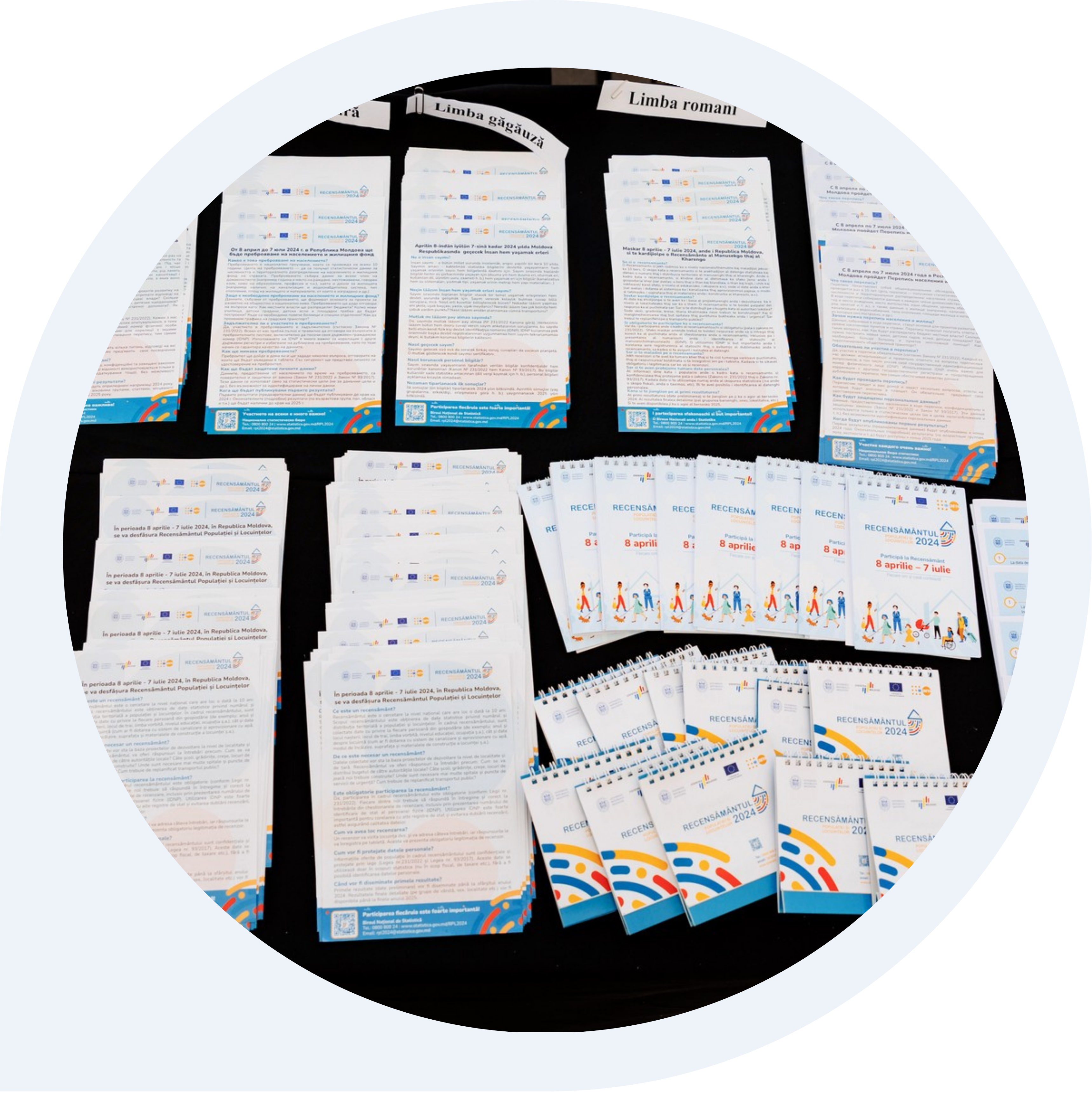Moldova
Capturing displacement and statelessness in the Population and Housing Census for inclusive policies and planning
Background
The phenomena of displacement and statelessness in Moldova have deep historical roots. Following the Soviet Union’s dissolution, political and territorial disputes in Transnistria [1] displaced many people, while documentation issues persist due to the unresolved situation. National authorities have been working to address this, including through amendments to the Citizenship Law in 2023 and the national programme on human rights for 2024–2027.
The war in Ukraine has added a new dimension to Moldova’s displacement landscape with over 1.2 million border crossings from Ukraine recorded since February 2022, according to the UNHCR [2]. This influx prompted a swift governmental response, including a Temporary Protection Mechanism (later prolonged) and the 2024 Refugee Response Plan (RRP). As of 31st of January 2025, UNHCR estimated 127,786 refugees remain in the country, while almost 66 thousand persons have been registered since March 2023 as beneficiaries of temporary protection according to the General Inspectorate for Migration.
The crisis also revealed gaps and inconsistencies in available data and the need for stronger nationally owned statistics on displacement. As a result, the National Bureau of Statistics (NBS) incorporated displacement and statelessness into the Population and Housing Census conducted in 2024.

The 3rd Population and Housing Census
This iteration was the third census since Moldova’s independence, financed primarily by the State budget, with technical assistance from the European Union (EU) and the United Nations Population Fund (UNFPA), amongst others. The legal and regulatory framework were created in 2022, when the Law on the Population and Housing Census was adopted, and the Government decision on the 2024 census conduct was approved. A National Commission was established to oversee the process and approve key decisions. It comprised 28 members (of which 21 with a voting right) including high-level representatives from ministries, other public institutions, academia, civil society and international agencies. To ensure coverage, 35 Territorial Commissions were also established by district and municipal councils.
During census preparations, the NBS benefited from public consultations on the list of variables to be captured in the census, as well as on the census questionnaires, and were also able to consider the experience of previous censuses and relevant international standards. The inclusion of refugees, IDPs, and statelessness in the 2024 census was a direct response to the needs expressed by key data users during the consultations, including the Ministry of Internal Affairs, the General Inspectorate for Migration, the Office of the High Commissioner for Human Rights (OHCHR), the International Organization for Migration (IOM), and United Nations Refugee Agency (UNHCR).
A pilot was conducted in mid-2023 and, after the necessary revisions, the census was carried out by over 4000 enumerators through face-to-face computer-assisted interviews between 8th April and 7th July 2024. Broad coverage was achieved, including persons living in collective living quarters, such as refugee camps, reception centers, temporary structures and collective accommodation. Nevertheless, enumeration did not cover Transnistria and some areas of the security zone, where security measures for census staff and equipment could not be ensured.
Preliminary results were disseminated in January 2025 covering data on population size and structure by sex, age, urban/rural area, and country of birth, as well as the distribution of the population by development regions and ethno-cultural characteristics. Concerning citizenship, preliminary results show that 83.4% declared that they had citizenship of Moldova, 15.6% declared having the citizenship of Moldova and another state(s), while 0.9% declared they had foreign citizenship or no citizenship at all (an increase by 0.4% compared to the 2014 census). Final results will be published in two stages: August 2025 and February 2026.
Population structure (%) by ethnicity: 2024 and 2014 censuses

Source: Statistica Moldovei
The use of the International Recommendations
Moldova’s census was conducted based on international recommendations [3] and advanced practices. The census’ individual questionnaire also included the core variables recommended by the IRRS, IRIS, and IROSS. This included questions on country of birth, country of birth of parent(s), year of arrival, country of citizenship (including stateless, undetermined status and multiple citizenship), and country of previous or last residence (for both refugees in the country and refugees returning from abroad). It also asked the reason for migration for foreign-born migrants, with response categories including forced displacement, and about legal residential/international protection status, with options for refugees, asylum seekers, and temporary protected status.
Enumeration was conducted in two main languages (Romanian and Russian). In addition, translations of the questionnaire in other five languages (Gagauz, Ukrainian, Bulgarian, Romani, and English) were available for enumerators to use to explain/guide the process with these linguistic groups.
During data collection, the NBS observed that the participation among refugees and IDPs was lower than the general population. To address this, some dedicated meetings took place with non-governmental organisations (NGOs) to ask for their help in convincing refugees to accepted being enumerated, as many were afraid that their info will affect them. Similarly, a workshop with organisations that promote displaced persons’ rights was organised, informing a dedicated communication campaign developed by the NBS with support from partners (UNHCR, OHCHR, IOM, and UNPFA) to improve response rates. This included tailored advocacy materials and hiring community mediators from the Ukrainian and Roma populations.

Moldova’s multilingual communications materials | © Statistica Moldovei
Conclusion
The war in Ukraine, alongside Moldova’s status of EU candidacy negotiations, significantly increased the urgency for accurate and nationally owned data on refugees and IDPs. The 2024 census presented a key opportunity to respond to these needs by incorporating the international recommendations produced by EGRISS. With NBS’ leadership and support from partners, that ensured the inclusion of refugees and other vulnerable populations in the enumeration, Moldova has strengthened its capacity to address the social and economic challenges associated with large-scale displacement with census results informing national decision-making. In addition, the census will inform future statistical efforts including the improved sampling frame for household surveys and enhanced use of administrative data for timelier response and better statistics.
[1] According to the Law no. 173/2005, Transnistria is an inalienable component part of Moldova being and autonomous territorial unit with special legal status. Transnistria (Pridnestrovie) declared pseudo-independence under the name of the Dniester Moldavian Republic on 2nd September 1990, with the support of external political factors. However, its independence is not recognised internationally. See here.
[2] Data from the UNHCR. See here.
[3] UN Principles and Recommendations for Population and Housing Censuses, Revision 3, CES Recommendations for the 2020 Censuses of Population and Housing, Regulation (EC) No 763/2008 of the European Parliament and of the Council of 9 July 2008 on population and housing censuses.
